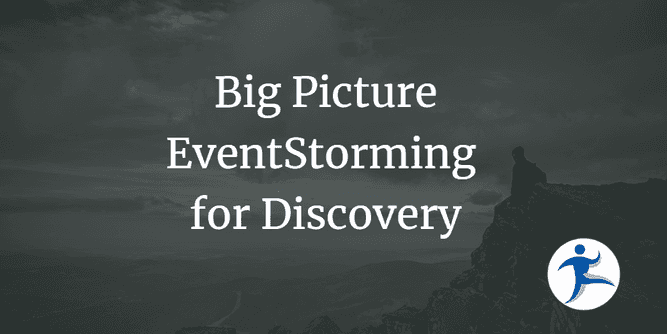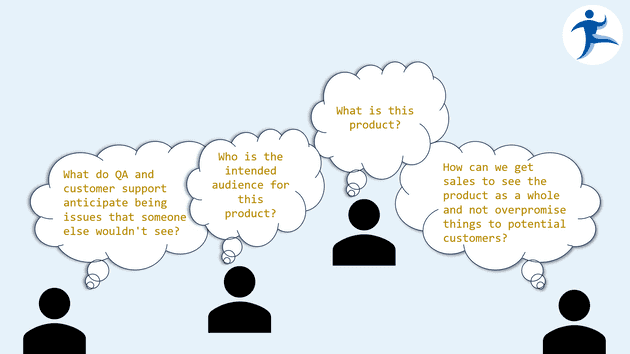Have you ever been on a company project where you had a lot of questions because you felt like there were a lot of unknowns? Have you been stuck in the game of telephone, using a project manager as the person who talks to the business and then talks to the technical teams? Are you tired of the inefficiencies and miscommunications that happen in this process? Let’s talk about a better way to have conversations about a project and getting answers to those questions. Let’s look at EventStorming!
What is EventStorming?
EventStorming is a workshop experience that gets everyone in the room to talk about a situation in a complex business domain - something that needs more clarity and understanding and requires more conversations. It was introduced to the community by Alberto Brandolini - and as he puts it - EventStorming is the smartest approach to collabration beyond silo boundaries.
EventStorming brings the relevant people in the room - the people with questions and the people with answers - and gets people thinking about things from their perspective as well as learning from others. It helps develop the ubiquitous language for the project. There are sticky notes that are scattered on a wall - or digital sticky notes on a digital whiteboard - that get these perspectives out. The sticky notes help to inspire more conversation to generate a common understanding of something.
EventStorming sessions use sticky notes of different colors to represent different things - such as yellow sticky notes to represent types of users, orange stickt notes for events that have happened, and light pink sticky notes for systems that are relevant to the discussion.
The sticky notes are mere vehicles to important conversations. In the end, it isn’t about the stickies - it’s all about the conversations.
The outcomes of an EventStorming session will depend on the type of EventStorming used. Let’s look at those types.
Types of EventStorming
There are many types of EventStorming. The key three are:
- Big Picture EventStorming - used for high level exploration and discovery
- Process Modeling EventStorming - to better understand a process
- System Design EventStorming - for designing systems in a domain-driven design way, identifying bounded contexts
There are other ways to use EventStorming to bring out conversations and improve systems and relationships between teams. You can use EventStorming to assist with things such as:
- People Experience - users, developers, customers, stakeholders
- Retrospective
For this post, we are going to look at Big Picture EventStorming and how it is used for discovery.
Using EventStorming for Discovery
A Big Picture EventStorming workshop is the largest of the EventStorming types. It gets as many people as needed to look at things from a high level. The goal is to have discussions about the situation without getting into the implementation specifics.
EventStorming typically follows this pattern:
- Gather together in an area. Then diverge to write down past events individually.
- Post the events in a place visible for all to see. Conversations will emerge from the events.
- At the end of the session, the discussions will converge on potential solutions or next steps based on the conversations.
Example: Launching a New Product
A marketing client is in the process of launching a new product. However, before they get in deep with this launch, they want to make sure they have everything covered. They heard about this EventStorming thing and wondered if we could help them out.
First, we identify the people who need to be in the room where it happens. This group of people includes the product owners, marketers, sales team, developers, quality assurance, and customer support. Anyone who has a stake in the overall product should be there to either ask the questions or provide the answers and guidance needed.
Then, we get everyone together in a room - or a hallway - some place where they can easily move around, place sticky notes on a wall, and have conversations about the contents of those stickies. We start by asking them to individually write events that happened or will have happened on orange sticky notes. They will place them on the wall.
From there, we talk about the stickies and try to identify key events. Those key events will help us to order the rest of the events in a timeline. As those are getting ordered, more questions may come up and pain points are identified. Sticky notes can capture the questions and pain points.
Once we talk about the pain points and answer questions, more events may emerge. External systems are identified as conversations happen. Sticky notes get added to capture these events and external systems.
In these conversations, people may identify who is responsible for these systems or who uses these systems. Capture the people aspect with yellow sticky notes.
By the end of a Big Picture EventStorming session, hotspots should be resolved or noted to be followed up pending further discussion, in the case where there are more people necessary for additional conversations. The outcome of the Big Picture EventStorming should capture the exploration and discovery, resolve questions, and possibly identify opportunities for the product launch.
Learn More
If you want to learn more about EventStorming, we have many options that can help.
Sign up for our EventStorming 1-hour on-demand webinar with supporting links. Or you can also watch the recording on YouTube.
In 2024, we will also have paid trainings for EventStorming for System Design.
There is a Domain-Driven Design North America group on LinkedIn. Join the group to meet others in the Domain-Driven Design space and learn from each other.
We also cover EventStorming on DevIQ. DevIQ is our reference site that covers high-level software development topics including domain-driven design, design patterns, and antipatterns.
If you’re interested in having us facilitate EventStorming sessions in your company, contact us today!




